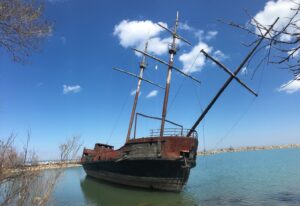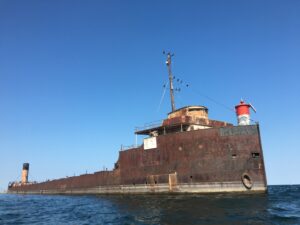The LaHave River has long been a popular paddling route for Nova Scotians. The history of the river and the many communities found along its riverbanks have a significant history in shipbuilding and sailing. These industries take advantage of the same characteristics that kayakers and canoeists continue to take advantage of today. That is the gently flowing, calm waters protected from the swells and weather of the nearby Atlantic Ocean.
While the LaHave should be on every paddler’s bucket list, it was not the tranquil waters and wildlife that brought us here, instead, it was the rusting, decrepit hulls of three former trawlers. While the trawlers do not hold much significance to the community of Bridgewater which they now call home, they piqued my interest because they had become a controversial talking point in the community because of their deteriorating condition and risk to the surrounding environment.
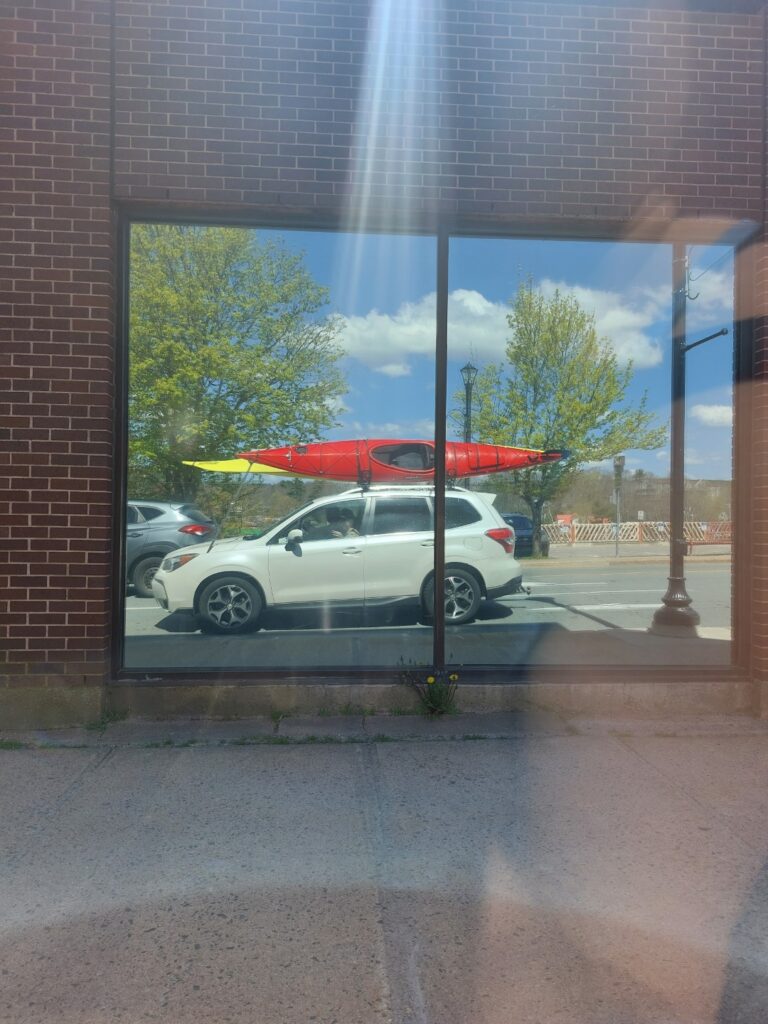
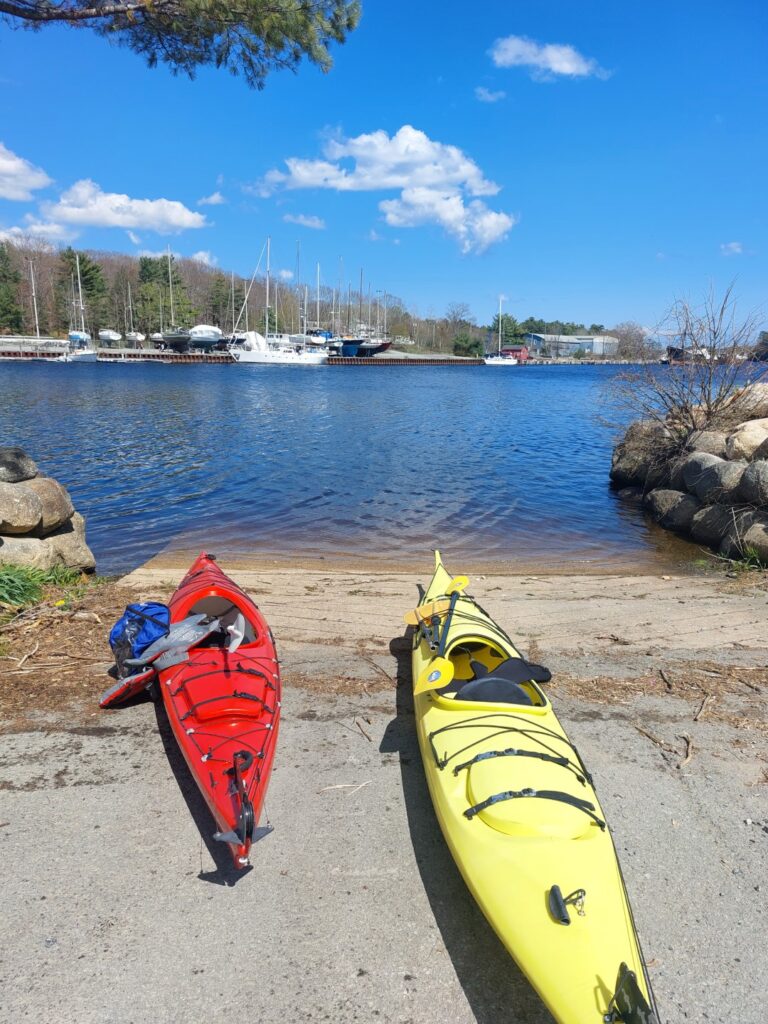
This would only be the second time trying out our two, new-to-us kayaks and so after some time reconfiguring the roof racks on our Forrester, we set off to Shipyards Landing, at the south end of Bridgewater. The launch site offers free parking, and a small boat ramp provides easy access to the water.
We decided to take advantage of the good light and once on the water made the short trek to the three ships. The first ship we came upon was the Hannah Atlantic. The former trawler that operated most of its life out of Halifax was accompanied by the Ryan Atlantic. However, while the Hannah Atlantic appeared in relatively good condition (for its age and neglect that is), the Ryan Atlantic was a much different story. The ships had been berthed here awaiting to be scrapped. Of course, that was more than a decade ago and since that time it appears the Ryan Atlantic is the only ship to have parts removed. The hull of the bow had been cut and most of the ship’s superstructure was either partially or completely removed.
Taking pictures of the two ships was difficult due to the surprising current flowing in the river. Once we finished, we rounded the stern, to reach the third trawler found on the opposite side of the dock named the Rupert Brand VI. The size of the first two ships had surprised us. Their hulls towered high above the water line but as we finally caught a glimpse at the third ship in the trio, it quickly became apparent something was wrong. Upon further investigation the reason for this became apparent; the trawler had sunk and was resting (presumably) on the bottom of the river. The water had flooded most of its hull and deck. Paddling alongside we were able to hold onto the side of the ship and take a few pictures of the eerie site.
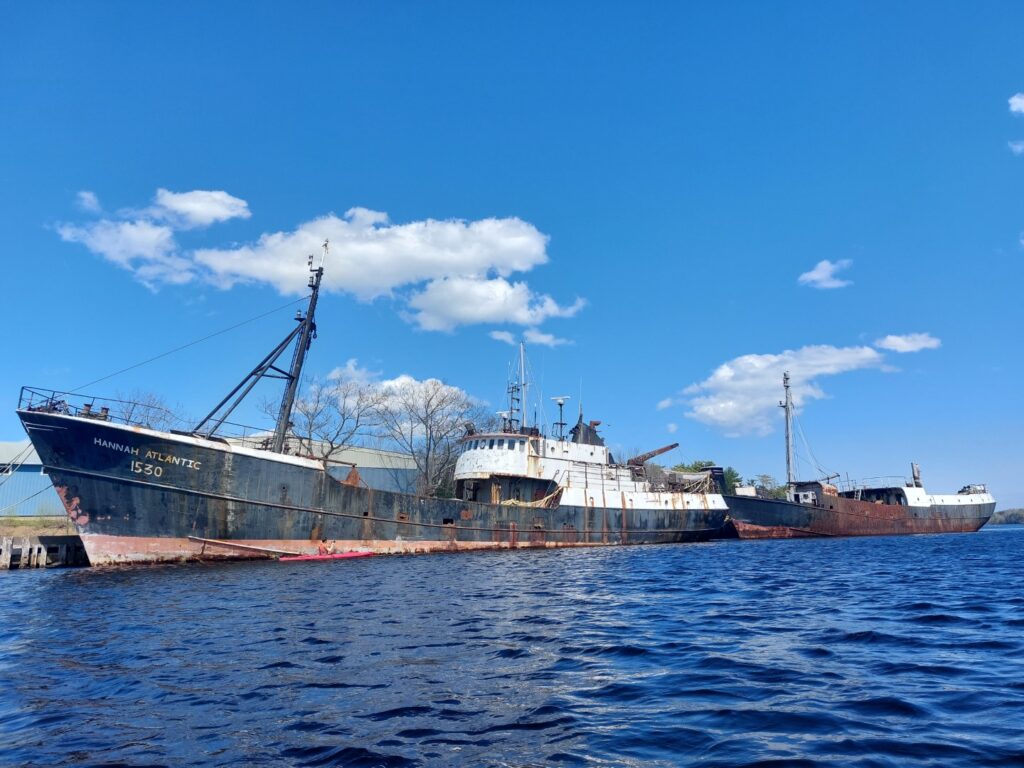
Despite being located between the riverbank and the wharf which separated us from the actual river, the current here was still fairly strong. I found this out when I quickly removed my sunglasses to take a picture of the sunken trawler behind me. After putting the camera down, my eyes were attracted were redirected to movement in the water, and as I turned my head, I saw one quick glimpse of my sunglasses as they slowly sank into the water while also flowing downstream with the flow of the current. This is why I don’t buy expensive sunglasses.
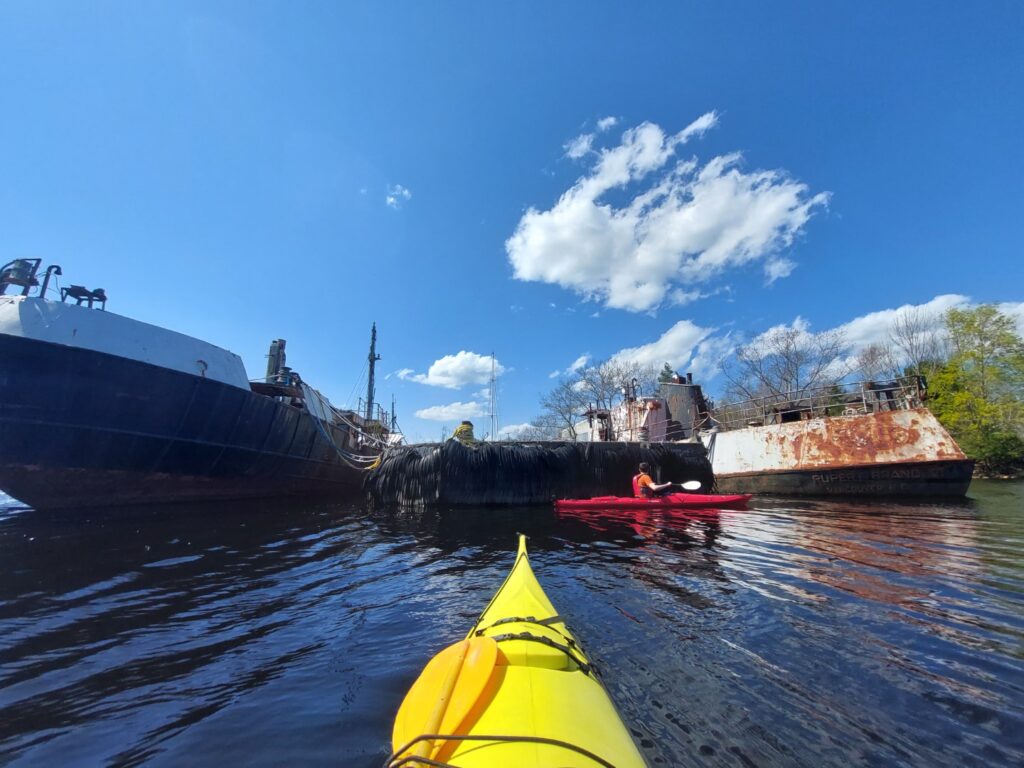
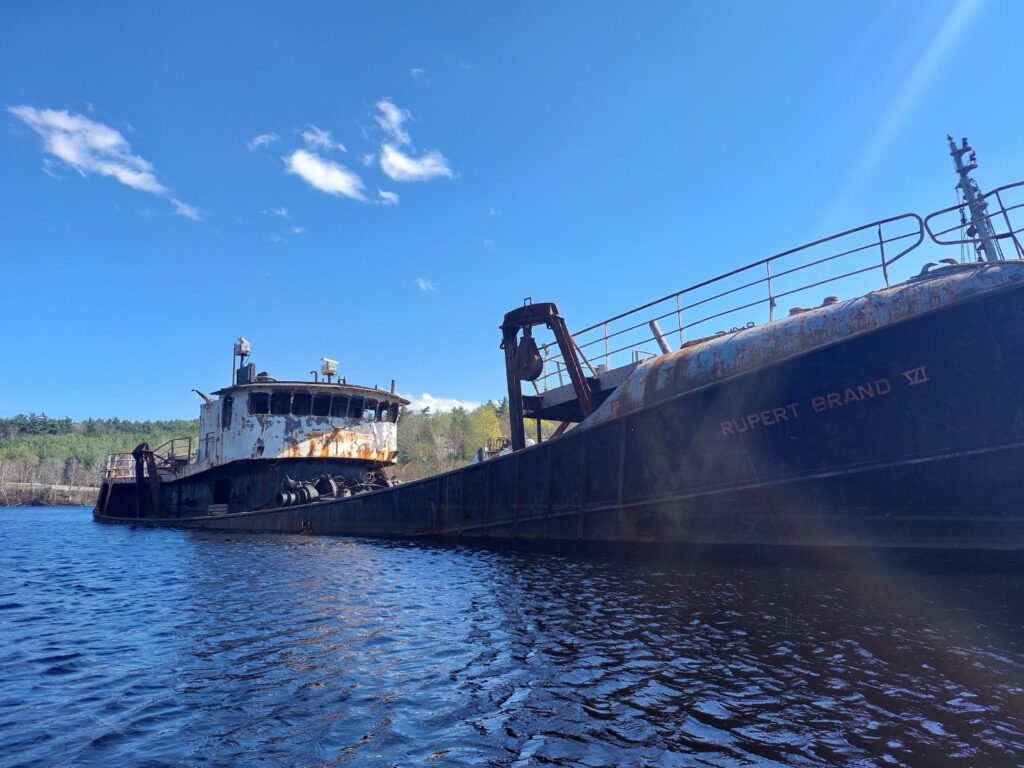
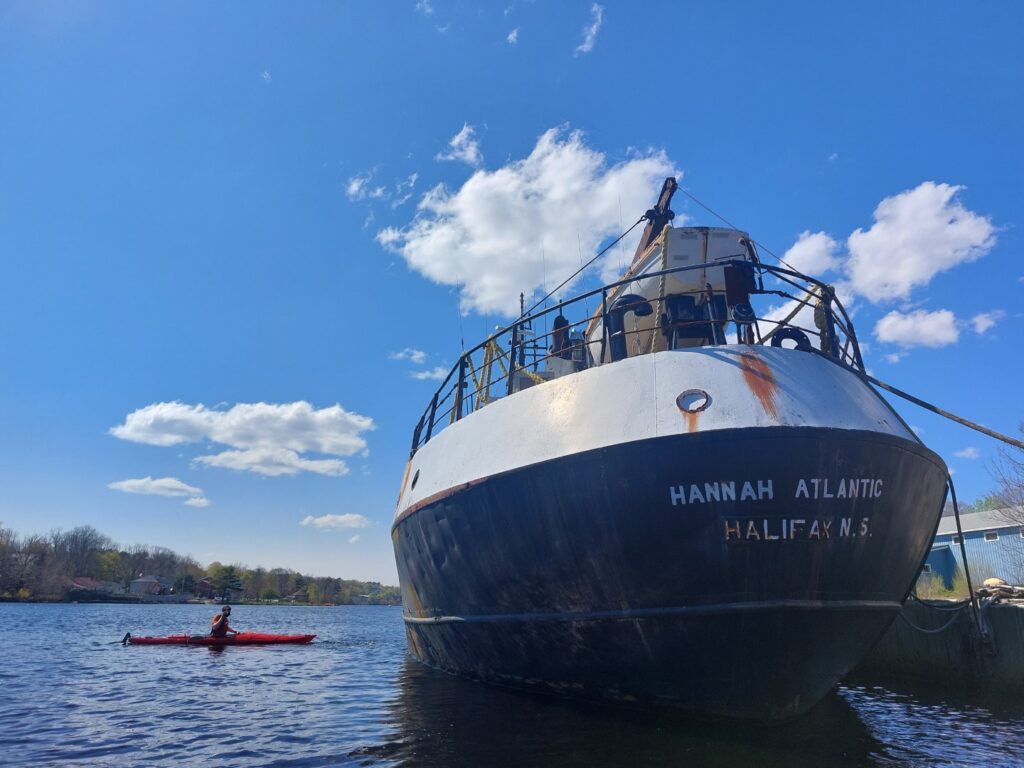
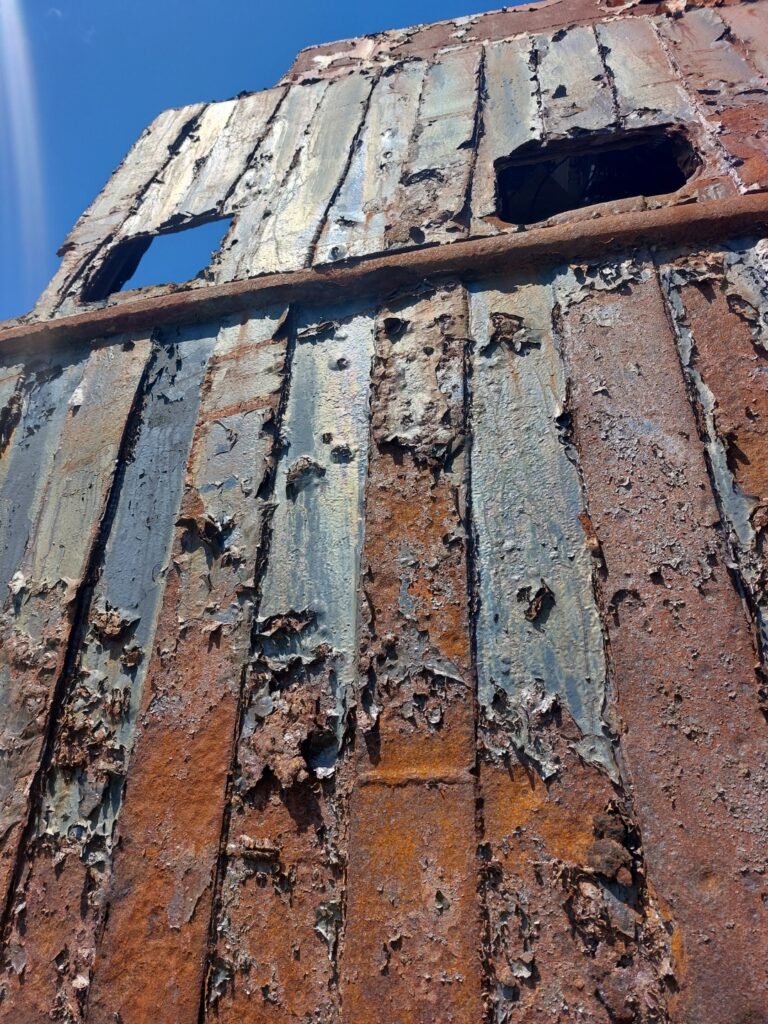
After fighting the current to take a few more photos we decided to continue paddling upriver towards the town of Bridgewater itself. While the river is normally protected from the wind and waves of the Atlantic Ocean, the river’s relatively straight path, void of trees or hills to block it, a northwest wind or southwest wind can make this paddle much harder than it should be. Combine this with the current and we were nervous about whether we would be able to paddle up the river at all. But there was a reason we left our ten-foot pelican kayaks behind and upgraded to longer, sleeker sea kayaks. Using the odd wharf, boat, and curve in the river we were able to stay out of the gusty wind and make our way upstream.
The river provides great views of Bridgewater and after passing under a couple of low bridges we found the outlet of a small stream to stop at near an old bridge on the river’s south bank. Here we were able to pull the kayaks in and break out a few snacks and a beverage or two. Exploring the stream a little closer, we found remnants of several old concrete structures and steel pipes which had become home to a couple of curious minks, who would periodically pop their curious heads out to see if we had left yet.
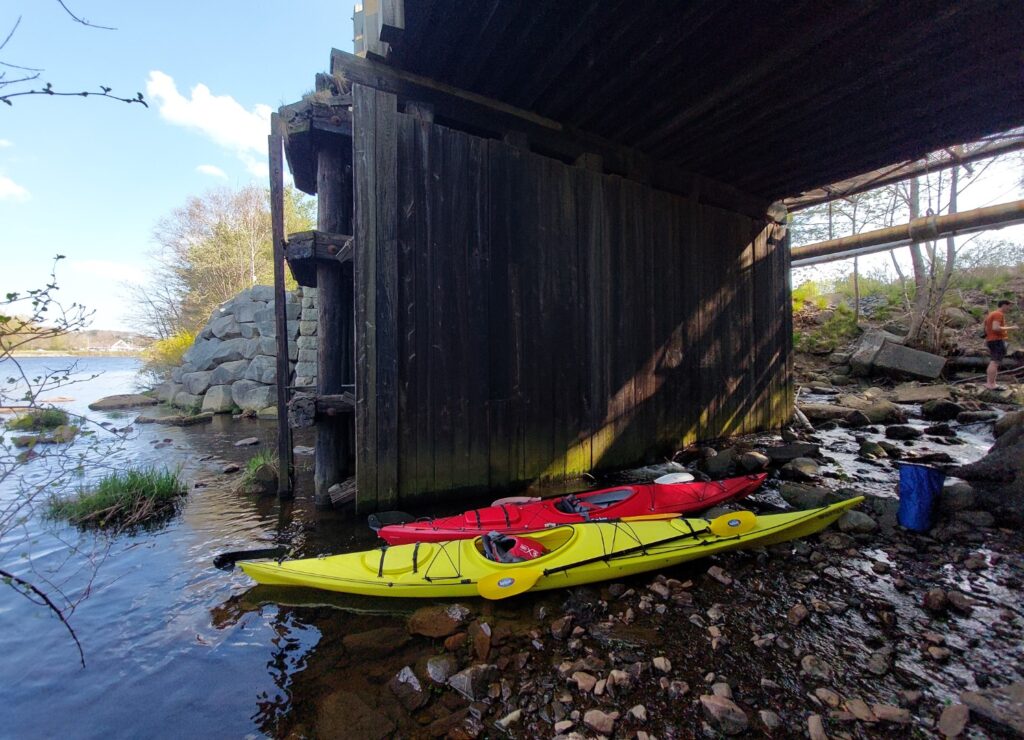
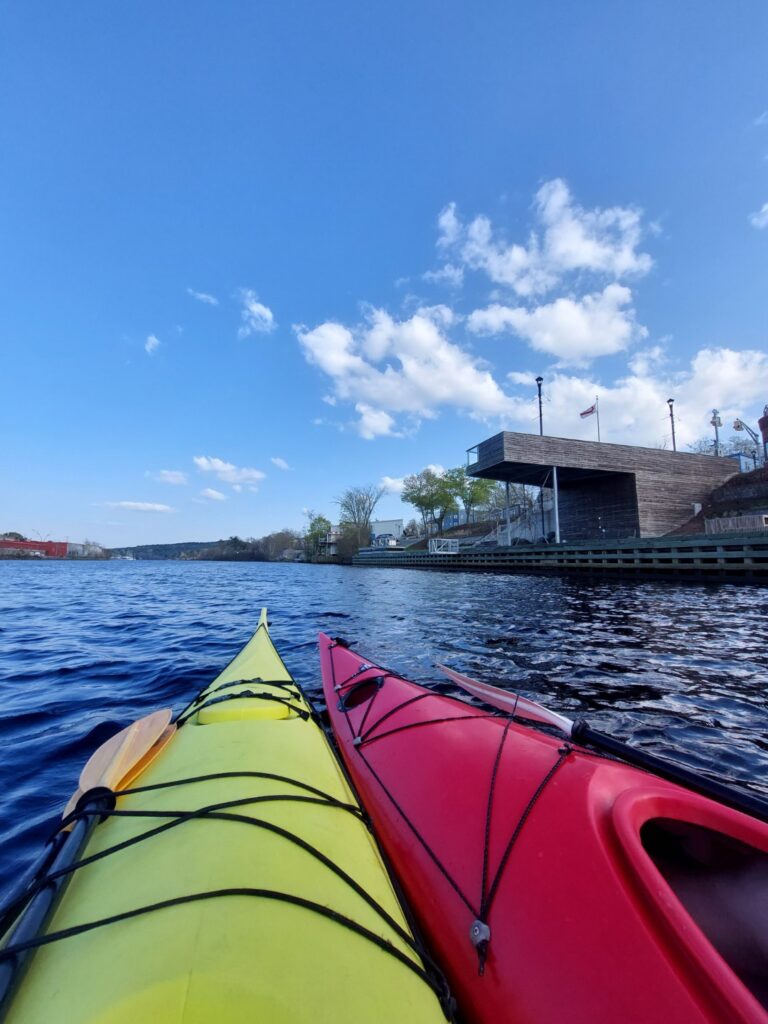
After a brief break, we decided to head back down the river. This was much easier as we now had the current pushing us downriver and the wind at our backs. We hardly paddled for the rest of the trip and gently floated back to the car. Finally, after a quick stop at FirkinStein Brewing where we ordered in a burger from Jac’s Burgers and Shakes located across the street, we were finally on our way back to Halifax.

